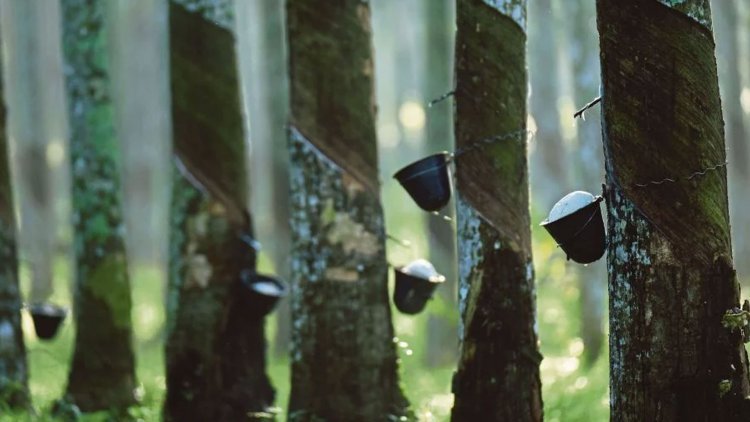Rubber prices have fallen to two-year lows due to low demand and large supply
This could result in dwindling tap interest among producers.

Natural rubber prices in India have fallen to a two-year low due to weak market predictions and increased arrivals, prompting concerns about dwindling tapping enthusiasm among growers during the current peak harvest season.
The RSS-4 kind used by the tyre industry costs Rs 137.5 per kilogramme, an 8% decrease in the last few months. This week's drop was exacerbated by reports of the spread of a new form of COVID-19 in China.
Prices last reached this level in October 2020, as the economy recovered from the first COVID-19 lockdown. International market challenges have also contributed to the drop in rubber prices.
"The offtake by the tyre sector is minimal, and this is the peak tapping season. Rubber prices had skyrocketed when the pandemic ended, and they are now correcting," said K N Raghavan, Executive Director (ED), Rubber Board.
The tyre industry's forecasted increase in demand in the third quarter of the fiscal year did not materialise, and car sales remain sluggish. They now expect a pickup only in the fourth quarter.
Because of excess supply and the development of COVID-19 in China, the world's largest consumer, international rubber prices have remained low in recent months. But, according to rubber analyst and expert Jom Jacob, there is no need for concern.
"China is lowering its controls on COVID-19 and there is a reduction of anxiety over the demand outlook of natural rubber (NR) in China. Businesses and diverse economic activities are reportedly returning to normal after dealing with the upheaval caused by the rapid easing of restrictions," he said.
Furthermore, the Kerala government's price support scheme ensures that small producers, who make for the bulk of rubber growers in the state, receive a price of Rs 170 per kg. This had kept their interest in tapping alive, even at reduced pricing. It would have resulted in more rubber tapping this season if payments from the government had been made on time, as the gap between the market price and the government price is presently Rs 32 per kg.
However, the government, which is short on cash, has only released roughly Rs 1 crore so far this year. "As a result of this, as well as the decline in demand," Raghavan explained.
In the fiscal year 2022-23, the Rubber Board aimed for a 10% increase in production to 8.5 lakh tonnes. Raghavan stated that the current estimate is around eight lakh tonnes. From April to October 2022, production increased by 10% year on year (YoY) to 4.27 lakh tonnes, while consumption increased by 7.5 percent to 7.88 lakh tonnes. However, growth has slowed since October, when the peak season began.
Consumption surged at a faster rate of 13% last year than output, which expanded by more than 8%. In 2021-22, consumption reached a record high of 12.38 lakh tonnes. However, the tendency appears to have reversed this year.
Climate change is affecting output, so things aren't looking good on the production front. "As a result of significant rainfall in the last two months there has been a lot of leaf fall, which has resulted in decreased yields. Given the circumstances, the peak tapping season may not last into January," stated George Valy, President of the Indian Rubber Dealers Federation.
Higher output in the north-eastern region, which is the second-largest rubber producing region after Kerala, and higher imports, he claims, have led to the price fall. Imports increased by almost 16% to 329,277 tonnes from April to October 2022, compared to the same period last year.
According to Jom Jacob, the easing of bad weather conditions in Thailand, the world's largest rubber producer, and the commencement of the lean season in Vietnam and China, which leads to a seasonal decline in world supply, will have only a minimal impact on pricing. "First, there would be excess stock on the market since the world output stayed well above the supply for the preceding five months. Second, the recent increase in COVID-19 infections in China, as well as renewed concerns about a worldwide economic slowdown, are weighing on global demand prospects."
Latex costs are expected to rise substantially faster, owing to increased demand from glove manufacturers amid rising COVID-19 infection in China, he added. Dry latex prices in India have rebounded to roughly Rs 89 per kg after falling by 35% to Rs 85 per kg, which may bring relief to rubber growers. Because the glove industry was in overdrive during the epidemic, there was greater demand for latex than rubber sheets.




 admin
admin 




















